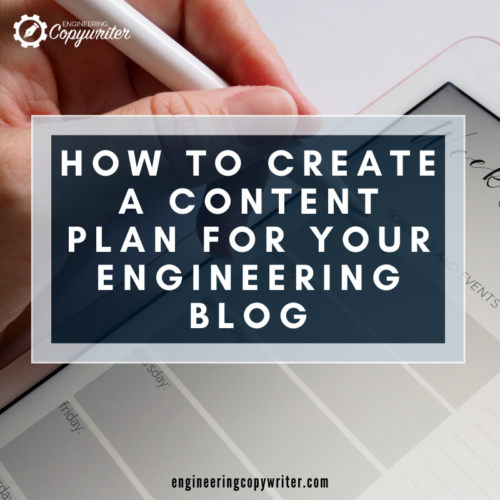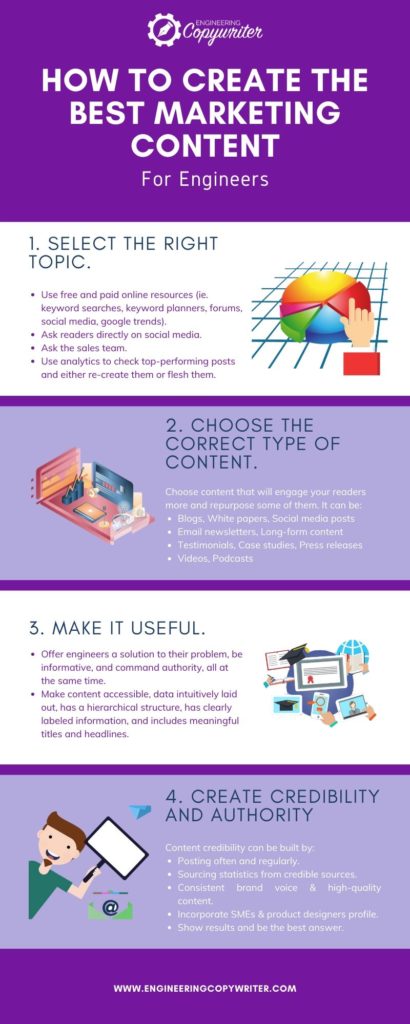A content plan is a document that organizes and outlines the resources, activities, and tasks associated with content development, delivery, and promotion. The main goal of content planning is to lay out each phase of the content generation process needed to achieve the company’s digital marketing objectives.
Ideally, a well-defined content strategy should be created before establishing the content plan. This strategy will guide all subsequent decisions. Once the goals are set, you are ready to proceed with the content planning. There are several critical factors to consider first before developing your content plan. These are listed below:
-
-
- – Target audience
Your target market will determine which engineering content ideas will perform well. Do extensive research about their content consumption needs and habits. Take a look at what they want, how to reach them, and how your products and services can help them. Use tools such as Google Analytics to figure out your audience’s characteristics, activities, and preferences. This will assist you in creating content that is relevant to all your customers no matter where they are in the marketing funnel.
-
- – Branding
Your content marketing strategy will fail if you don’t fully understand your brand and its values. Knowledge of your brand will provide you with an idea of what engineering content you should publish and how it can align with your branding strategy. This includes the tone of voice and the branding message that your engineering firm wants to communicate to your audience.
-
- – Marketing channels and strategies
In determining the optimal methods and timing to promote your engineering content, you must also be familiar with and have access to various content marketing strategies and platforms. Social media, email, and your website are all important channels for promoting engineering content. Your communication techniques and timing will largely be determined by your target audience’s preferences.
-
Once you have defined those factors listed above, you can finally create your content plan. Its components are listed and discussed in the sections below.





 It is the first crucial step in creating a content plan for your engineering blog. It is the process of researching common search terms that people type into search engines like Google. The results are then strategically integrated into your content so that it ranks higher on a search engine results page (SERP) and benefits your overall
It is the first crucial step in creating a content plan for your engineering blog. It is the process of researching common search terms that people type into search engines like Google. The results are then strategically integrated into your content so that it ranks higher on a search engine results page (SERP) and benefits your overall  Once the copywriting and editing details are set, the next step is to agree on timelines. Building timelines into your content plan will help you track and manage your content’s progress. A detailed timeline for your content should include submission and publishing schedules. Don’t forget to also note which writers and editors each task is assigned to so you can maintain accountability within the team and ensure the timely completion of tasks.
Once the copywriting and editing details are set, the next step is to agree on timelines. Building timelines into your content plan will help you track and manage your content’s progress. A detailed timeline for your content should include submission and publishing schedules. Don’t forget to also note which writers and editors each task is assigned to so you can maintain accountability within the team and ensure the timely completion of tasks.
